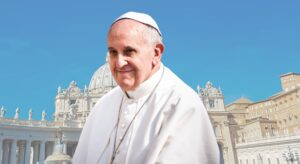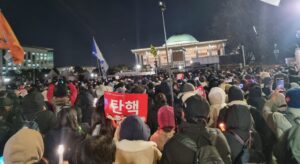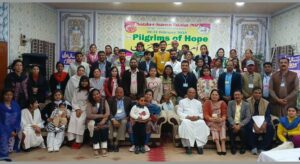Short Summary of Michael Amaladoss’ paper – ASIAN THEOLOGY: WHAT? WHY? HOW?
- Neilan D'Souza

This paper written by Michael Amaladoss SJ discusses the evolution of theological perspectives within the Catholic Church, particularly regarding the concept of a universal theology versus the recognition of local Churches. The document highlights that the Second Vatican Council clarified that the universal Church is a communion of local Churches, leading theologians and pastors in Asia to feel more freedom in exploring theological questions. It mentions the historical presence of Asian theology dating back to figures like Mateo Ricci in China and Roberto de Nobili in India, The Federation of Asian Bishops Conference and its ‘FABC Papers’ emphasizing the focus on addressing concrete local issues faced by local Churches in their missionary and pastoral activities.
Michael Amaladoss begins by asking a question ‘What is Asian Theology ?’, He breaks it down to a simple manner stating that “Theology, traditionally, used to be defined in a simple manner as ‘faith seeking understanding’ ” further he explains how Philosophy is said to be the handmaid of theology; and also how contemporary theologians seek to use modern philosophies in their attempt to modernize theology and make it accessible to modern Christians. Then he talks of how Christianity spread in the eastern countries where they had their own philosophies, attempts of inculturation of Christianity were made in Asia, leading to “Asian Christians began dialoguing with Asian philosophies so that they can replace Scholastic philosophy in Asian theologizing.” which did not lead anywhere. “As a matter of fact, the need to use any philosophy at all in order to understand the faith is being questioned. The emergence of liberation theology in Latin America changed the way of theologizing itself.” The Latin Americans started with the people, poor and suffering, to whom they had to proclaim the Gospel as a liberating ‘Good News’ just as “Jesus came into Galilee, proclaiming the good news of God, and saying, “The time is fulfilled, and the kingdom of God has come near; repent and believe in the good news.” (Mk 1:14-15) . The Second Vatican Council recalls this mission: “The Church, endowed with the gifts of her founder and faithfully observing his precepts of charity, humility and self-denial, receives the mission of proclaiming and establishing among all peoples the kingdom of Christ and of God, and she is, on earth, the seed and the beginning of that kingdom. While she slowly grows into maturity, the Church longs for the completed kingdom and, with all her strength, hopes and desires to be united in glory with her king.” (Lumen Gentium, 5)
Moving on Amaladoss speaks about Mission and Theology in the Context of Mission by giving many examples from the bible on how Jesus through his many parables and teachings proclaimed the Kingdom of God and concludes with what we have made it into in today’s times, “the Kingdom that Jesus proclaimed is a community of humans in which people love each other through service, sharing and self-gift. Looking around us at the world today, with people suffering from poverty, injustice, mutual hatred and conflict everywhere, we can say that building community remains a continuing challenge.” So in order to construct the Kingdom of God as a community of humans Amaladoss says that we have to understand the task of theology. Our context is the reality of the world in which we are living – a world of poor and suffering people and what we call theology is the process of looking at our world in the context of the ‘Good News’ of Jesus and discerning how we can transform it into the Kingdom. He states that such a theo-logy will lead us to a theo-praxis. So now we can attempt a description of theology he says. “Theology is an understanding of the good news of Jesus in the context of our lives in which we are proclaiming it in view of transforming that context – ourselves – into the Kingdom of God.”
Michael Amaladoss discusses the importance of analyzing our context in theological reflection. He presents a cyclical process that begins with our living experience in the context of Jesus calling us to build the Kingdom of God in collaboration with our community. By giving a example of poverty Amaladoss breaks down how every context has layers of dimensions and emphasises how coming together, becoming aware and joining in struggles can be a powerful way to liberate ourselves “ There is a community that is poor. We want to free it from its poverty. But poverty may be a complex affair. At a superficial level poverty may mean simply lack of resources. But people who are economically poor may also be politically powerless. They can bring about any change, only if they come together and struggle for their liberation. What they cannot achieve individually, they can try to achieve collectively as a group. Even then the people in power may keep them down by violence, if necessary. So there need for dialogue and even conflict, if necessary. We already have four elements here: individual, community, economics and politics. Culture and religion are two other elements that condition their lives. The caste system in India, race in some places, open and hidden forms of slavery in other areas…Any liberation, therefore, has to be political and economic, personal and social and cultural and religious. So it is multi-dimensional and complicated.” The text above identifies several factors that can hinder collective action. One is social divisions, like caste systems or racial prejudice. These can be exploited to keep the underprivileged from uniting. Religion can also play a part, with beliefs like karma potentially causing people to accept their situation.
But “Unfortunately, in the course of mission, the Euro-American churches, not only brought us the ‘Good News’, but imposed on us their ecclesiastical and theological vision and structures. Conversion itself may have become a colonial tool.” “The colonial powers have imposed, not only their political power, but also their economy, culture and religion, more or less totally in Latin America, but with less success in Africa and Asia. At the religious level, speaking for my own Catholic Church, it is still identified as the Roman Catholic Church and its liturgy, theology and Church structures are imposed everywhere as universal. Only after the Second Vatican Council, we have started talking about the universal Church as a Communion of Local Churches. We are now trying to promote ‘inculturation’, but still very much under the control of Rome. In any case, in trying to do contextual theology, we are only doing what was naturally being done in the ancient Churches, thanks to the orientations of the Second Vatican Council, though the Vatican is still trying its best to control us in various ways.”
Amaladoss argues that theology in Asia must necessarily be contextual, emerging from the ground up and should not be a mere translation or interpretation of Euro-American theology. Instead, Asian theology should be a product of dialogue between the lived realities of the continent, its rich cultural and religious heritage, and the Gospel message. According to Amaladoss, true authenticity in Asian theology can only be achieved through the use of local languages. He explains that language is a cornerstone of culture, and thus Asian theological endeavors in English or other European languages are inherently limited “We cannot do Chinese, Indian or Korean theology in English or any other European language, though English remains a sort of link language among Asians”. While acknowledging English as a potential tool for communication among Asians, Amaladoss insists that genuine theological creativity can only flourish when expressed in the local languages.
After citing words from Pope Benedict XVI (then cardinal) in a conference at the university of Regensburg, Germany; and later talking about St. Ephrem of Syria, to Pope John Paul II speaking In his encyclical Fides et Ratio (Faith and Reason) Amaladoss acknowledges that both Popes demonstrate openness to the contemporary discussions surrounding Inculturation. However, he identifies a tension, as both Popes also express a strong reluctance to abandon tradition. Pope Benedict XVI, in particular, views the historical development of the Gospel in Judea and Greece as not just providential, but essential. If taken literally, this perspective renders the concept of inculturation meaningless. This issue was definitively addressed by the First Council of Jerusalem, where it was established that conversion to Christianity did not necessitate adopting Jewish practices. Drawing a parallel, Amaladoss asserts that becoming Christian does not require one to become European (or Greek). While he sees Pope Francis as more receptive to inculturation, Amaladoss expresses suspicion regarding the position of various Vatican Congregations on this topic.
But Amaladoss is certain that future Asian theology will be significantly shaped by interfaith dialogue “As we speaks about an ecumenical approach to theology, we could speak about an inter-religious approach to theological reflection in Asia”. He highlights the collaborative efforts of believers from diverse religions in promoting shared human and spiritual values within multi-religious societies. This collaboration, Amaladoss argues, will lead to a deeper understanding of their common ground in relation to the divine. As a result, their perspectives on faith will inevitably evolve. Theologians will no longer be able to address God, humanity, the world, revelation, or salvation without considering the experiences of others concerning these concepts. This “other,” which Amaladoss emphasizes, includes not only believers from different religions, but also the pre-Christian religious traditions held by Asians themselves. Though it must not be superficial attempts at harmony he says, advocating instead for a reflective process informed by a genuine appreciation for the perspectives of others.
Amaladoss identifies a distinct “Asian way of thinking” that subtly influences Asian theology. This approach prioritizes context over objectivity, symbolism over concepts, and interpretation over deduction. Symbols in this context are seen as multifaceted and open to various interpretations, fostering a relational pluralism rather than absolute relativism. The emphasis is not on individual truths but on the limitations of any one perspective. The Asian approach seeks the Absolute within the relative, acknowledging its manifestations without diminishing its ultimate nature. Unlike the Western use of analogy, Amaladoss says highlights similarities within differences, Asian thought delves deeper into the limited expressions of reality to grasp its true essence. This approach is holistic, preferring “both/and” over “either/or.” Proclamation and dialogue are viewed as interconnected aspects of a single process, acknowledging the complexity of lived experiences. Harmony is sought, holding opposing forces in creative tension rather than resorting to dichotomy.
Amaladoss observes a tendency towards tolerance of diversity among Asians, who may find the extremes of postmodern pluralism unsettling. However, they appreciate the shift away from absolute claims of rationality and objectivity in Western thought. While Asian theologians haven’t explicitly theorized these perspectives, they are evident in their approach to theological reflection. They are often surprised when their openness to pluralism is misconstrued as relativism or their emphasis on dialogue is seen as undermining proclamation.
Towards the end of his paper Amaladoss argues that theology, traditionally focused on intellectual knowledge of God, but neglected other dimensions of the divine. He points to the Latin saying “Ens est Verum, Bonum et Pulchrum” (Being is True, Good and Beautiful) which suggests that God embodies not just truth but also goodness and beauty. These aspects, are largely absent from theological discourse. Michael Amaladoss proposes moving beyond mere knowledge to experiencing God holistically. The author cites examples from the Christian tradition, including the works of artists like Michael Angelo and Raphael, musicians like Beethoven and Mozart, and poems of mystics like Meister Ekhart, St.Theresa and St. John of the Cross, along with the beauty of nature – the roaring sea, the majestic mountains, the twinkling stars, the blue sky, the multi-colour flowers, the lush forests, etc, as potential pathways to such experiences. He questions whether these elements are adequately integrated into theological education?
Amaladoss acknowledges that liberation theologies, like Minjung theology in Korea, address God’s goodness and desire for human happiness. He also emphasizes the importance of love, exemplified by Jesus’ actions: service, sharing, and self-gift, “Love one another as I have loved you.”(Jn 15:12) By Loving others in this way, allows us to experience God’s love and live in communion. He sees Jesus as a central expression of this concept, fostering a community that embodies Christ. Amaladoss suggests, that this goes beyond mere knowledge – it is living theology! highlighting the importance of experiencing God’s goodness and love through acts of service, sharing, and self-gift within a loving community. He ponders the possibility of abandoning the term “theology” in favor of a word in local languages that better captures the concept of experiencing God in all dimensions – truth, goodness, and beauty.
In conclusion Amaladoss proposes that replacing “theology” with a term signifying “God-experience” would encompass what was previously understood as “spirituality.” This broader concept would integrate diverse prayer experiences, both popular and elite. It would allow for engagement with both mystics and ordinary believers, acknowledging the possibility of God-experience at various levels. This approach, he argues, avoids the pitfall of academic theology becoming divorced from lived experience. He cites the example “As theology is being taught in some universities today in the West as an academic programme, one could be an atheist and be a professor of theology” and states in contrast, the “God-experience” which he proposes would be firmly rooted in the lived realities of the faith community.
With this framework, Amaladoss expresses hope that he has addressed the initial inquiry: “Asian theology: What, Why and How?” He defines theology not as the top-down transmission of a system, but as a process of reflecting on the grassroots experiences of faith. Theology, in his view, can only be local, taking on unique expressions in each Asian context – Korean in Korea, Indian in India. The sole external element comes from the biblical Word of God, particularly the Gospel’s “Good News.” However, this doesn’t negate the “Word” received through Asian religious and cultural traditions. The focus lies on responding to this combined “Word” through action in daily life. This dialogue, Amaladoss suggests, will lead to creative expressions within Asian churches, impacting their lives, community structures, worship practices, and theological reflection. Ultimately, this will allow them to contribute their unique perspective to the richness of the global Church.*




